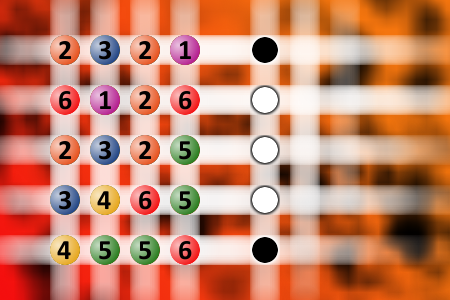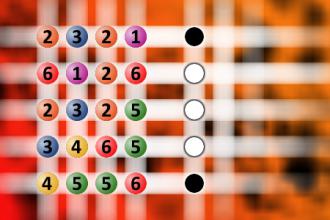What a winning combination?
The computer chose a secret code (sequence of 4 digits from 1 to 6). Your goal is to find that code. Black circles indicate the number of hits on the right spot. White circles indicate the number of hits on the wrong spot.Correct answers: 35
The first user who solved this task is Djordje Timotijevic.
#brainteasers #mastermind

A man wakes up one morning to...
A man wakes up one morning to find a gorilla on his roof.So he looks in the yellow pages and sure enough, there's anad for "Gorilla Removers."
He calls the number, and the gorilla remover says he'll be overin 30 minutes.
The gorilla remover arrives, and gets out of his van. He's got aladder, a baseball bat, a shotgun and a mean old pit bull."What are you going to do," the homeowner asks?
"I'm going to put this ladder up against the roof, then I'm going togo up there and knock the gorilla off the roof with this baseballbat. When the gorilla falls off, the pit bull is trained to grab histesticles and not let go. The gorilla will then be subdued enough for me to puthim in the cage in the back of the van."
He hands the shotgun to the homeowner."What's the shotgun for?" asks the homeowner.
"If the gorilla knocks me off the roof, shoot the dog!"
He calls the number, and the gorilla remover says he'll be overin 30 minutes.
The gorilla remover arrives, and gets out of his van. He's got aladder, a baseball bat, a shotgun and a mean old pit bull."What are you going to do," the homeowner asks?
"I'm going to put this ladder up against the roof, then I'm going togo up there and knock the gorilla off the roof with this baseballbat. When the gorilla falls off, the pit bull is trained to grab histesticles and not let go. The gorilla will then be subdued enough for me to puthim in the cage in the back of the van."
He hands the shotgun to the homeowner."What's the shotgun for?" asks the homeowner.
"If the gorilla knocks me off the roof, shoot the dog!"

